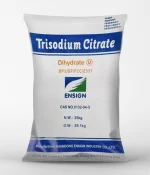** কেমিক্যাল এর দাম প্রতিনিয়ত পরিবর্তনশীল, তাই অর্ডার করার পূর্বে কেমিক্যাল পন্যের দাম ও স্টক সম্পর্কে জেনে নেয়ার অনুরোধ রইলো **
Trisodium citrate is like the unsung hero of the food and pharmaceutical industries. You might not have heard much about it, but trust me, it’s doing some pretty important stuff behind the scenes.
First off, trisodium citrate is made up of three sodium atoms and citric acid, which is a natural acid found in citrus fruits like lemons and oranges. So yeah, it’s got some pretty natural origins.
One of its main gigs is as a food additive. You’ll find it listed on ingredient labels under its E number, E331. It’s used for a bunch of reasons, but one of the big ones is as a preservative. Trisodium citrate helps prevent foods from spoiling by controlling their acidity levels. It’s also a buffering agent, which means it helps maintain the pH balance in foods, keeping them stable and safe to eat for longer periods.
But trisodium citrate isn’t just hanging out in your pantry. It’s also making appearances in your medicine cabinet. Ever taken a liquid medication that tastes surprisingly sweet? That’s probably because trisodium citrate is in there, acting as a flavor enhancer. It can mask the bitter taste of certain drugs, making them easier to swallow, especially for kids.
And it’s not done yet! Trisodium citrate is also used in other industries. In the realm of cosmetics, it’s a common ingredient in skincare products, helping to adjust the pH levels and stabilize formulations. Plus, it’s even used in some cleaning products as a chelating agent to bind to metal ions and soften water.
But hey, despite all these cool jobs, trisodium citrate is pretty safe to use. It’s been deemed generally recognized as safe (GRAS) by the FDA when used in accordance with good manufacturing practices. So, whether it’s keeping your food fresh, your medicine tasty, or your skin feeling smooth, trisodium citrate is quietly doing its thing to make our lives a little bit better.

















Reviews
There are no reviews yet.